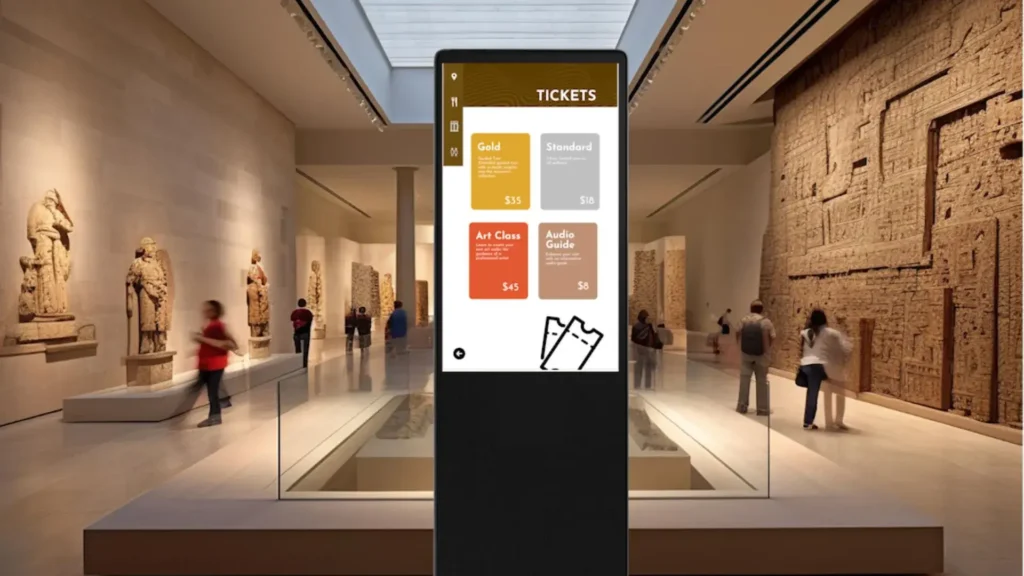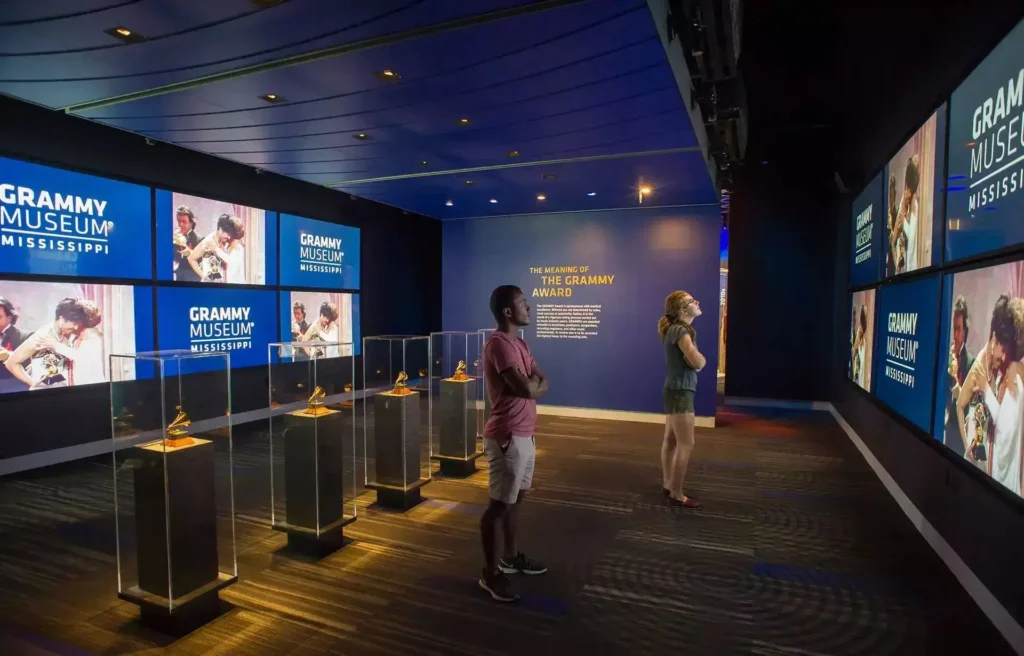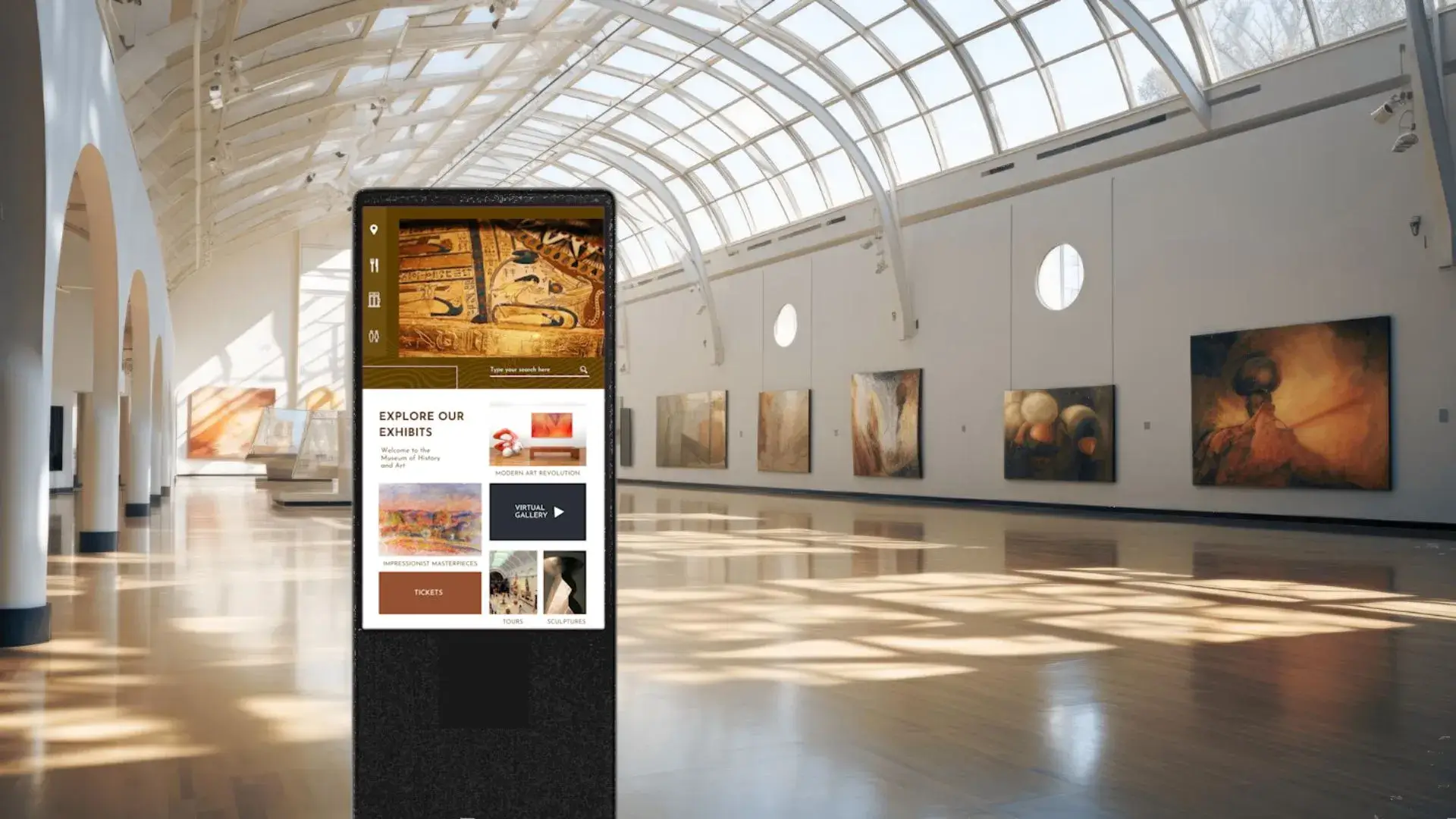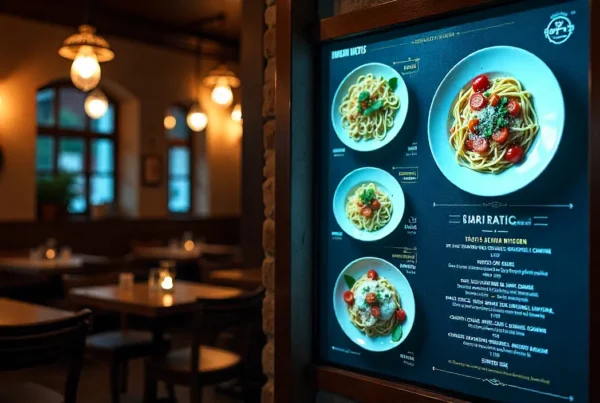Screens are more than gallery decor; they can be an interpretation of it. Using digital signage in museums, curators can make artifacts come to life, provide visitors with a clear sense of direction, and modify exhibits on the fly. When carefully implemented, museum digital signage can maintain the integrity of the experience, attracting digital-native viewers to a digital signage solution that allows institutions to reach audiences in an accessible, inclusive, and scalable manner.
Why Museums Are Turning to Digital Signage

Changing Visitor Expectations
The audiences of today are not interested in being observers. Digital Signage in Museums provides this solution in touch, motion, and responsive content– without sacrificing curatorial rigor. The outcome is longer-term stays and better understanding.
Storytelling That Overlays Context
Objects speak with the help of timelines, interviews, and reenactments. By involving all the senses in a single label, museum digital signage can take a few seconds to create a connection between provenance, place, and people.
Bridging Generations
Younger guests are driven by the desire to learn; traditionalists are driven by the desire to learn in silence. Screens allow you to deliver to both: immersive stations to explore and contemplative, captioned loops to reflect- one gallery, many ways.
Accessibility & Inclusivity by Design
Captions, sign-language video, audio description, and multilingual text are all built into Digital Signage for Museums, so that spaces can be friendly to everyone with any ability or language background.
Modern-Day Applications on the Gallery Floor
Interactive Exhibit Screens
Drag to turn artifacts, zoom manuscripts, compare restoration phases, and see x-rays–much detail without touching delicate objects.
Digital Wayfinding Displays
Sprawling campuses become navigable: step-free pathways, gallery attendance, coffee queues, elevators, and accessible washrooms are all shown in real time so visitors do not miss the works they must see.
Live Event Calendars
Speeches soon, workshop schedules, tour start times–all to the minute at the entrances and atriums to alleviate congestion.
Immersive Video Walls
Panoramas of ancient cities, ecosystem flythroughs, or ultra-high-res scans show what the eyes cannot see: perfect for orientation halls and traveling exhibitions.
Ticketing & Queue Boards
Eliminate uncertainty with wait-time estimates, time-slot reminders, and dynamic capacity messaging in sync with admissions systems.
How Museum Digital Signage Brings History Alive

Augmented Reality Integration
To see a fossil come to life, armor form, or an archaeological site come back to life over the centuries, AR-based on museum digital signage prompts.
Multimedia Storytelling
Dissolve oral histories, archival film, animation, and curator commentary to ensure visitors engage their head and heart, not just eye and label.
Images of Artifacts
Reconstruct lost, worn, or incomplete objects digitally; present a comparison of then and now states side by side to demonstrate conservation decisions.
Soundscapes & Narration
Directional sound and optional headsets provide period music and first-person narration without disturbing the quiet tone of the gallery.
Case Examples from Leading Institutions
The Smithsonian has interactive maps, and the British Museum digital reconstructions are other examples of high-traffic galleries using museum digital signage to lower congestion and indicate must-see works and tailor routes. The local history centers are a reflection of the model of community archives and oral-history kiosks, and they demonstrate that, with good curation, technology can be used to enhance scholarship, not to overpower it.
Digital Signage Solutions for Museums
Hardware Considerations
Professional displays (portrait/landscape), laser projector in low-light conditions, touch kiosk with museum-quality glass, and silent media players. Brightness, power, mounts, acoustics, and ADA sightlines are all planned to conserve and maintain comfort.
Museum Look Digital Signage Software
Look Digital Signage Software Museums allows curators to organize by gallery, schedule rotations, and remote update. Offline caching enables the shows to continue even when networks fail; proof-of-play and user roles enable governance of rotating exhibitions.
Cloud-Based vs. On-Premise Systems
Cloud delivers scalability and multi-site administration; on-prem enables fine control over sensitive archives and air-gapped networks. Resilience is achieved by many institutions through hybridization, a practice that is also prevalent in Digital Signage Solutions for Museums deployments.
Integration & Security
Connect to ticketing, beacons, people counters, and collection databases and segment devices, encrypt traffic, and enforce approvals to ensure interpretation remains authoritative.
Customizing Content for Different Audiences

Field trips work well on trails that are gamified and age-specific explainers; tourists use concise narratives, QR-linked in-depths, and multilingual tracks, researchers use high-res zooms, provenance timelines, and restoration diaries surfaced on demand. Museum digital signage allows each group to explore at the pace it prefers without label overcrowding.
Overcoming Implementation Challenges
Budgets begin small: focus on wayfinding and schedules, then expand to immersive walls. Train personnel with practical workshops, recording loops, timing, and simple troubleshooting. Most importantly, balance technology with tradition: use screens to frame objects, not overwhelm them; favor low-motion loops and museum-friendly color, and dwell-time-sensitive storytelling.
Analytics That Inform Better Exhibits
Dashboards indicate what screens are visited, what languages are chosen, and how visitors navigate. Digital Signage in Museums ensures that label density, route design, accessibility features, and program calendars are informed by insights, transforming interpretation into evidence-based curation.
Sustainability & Eco-Friendly Upside
Avoiding wastes by replacing print posters and brochures, efficient LEDs, ambient light dimming, and sleep schedules save energy. Museums can achieve environmental sustainability goals without compromising experience or conservation requirements with Thoughtful Digital Signage Solutions for Museums.
Future Trends in Museum Digital Signage
Artificial Intelligence for Personalized Tours
Recommend routes based on interest, time available, and crowd levels; recommend related works in the area in real time.
Virtual Reality Exhibits
Traveling through ancient streets, sailing historical seas, or entering the perspective of a painting, VR points located near major galleries.
Holographic Displays
Full-sized figures tell the story of their time, or buildings that are no longer there are recreated- potent in time-specific exhibitions.
Real-time Multilingual Translations
On-screen or paired device translation reduces the language barrier and enhances global visitor fairness.
Bring Your Galleries to Life
Share your floor plan, audience mix, and exhibition calendar. We will plot out a phased approach to museum digital signage– wayfinding, schedules, to AR-enhanced storytelling using robust Digital Signage Solutions for Museums and reliable tooling like Look Digital Signage Software for Museums to enhance your curatorial voice.
FAQs: Museum Digital Signage
What is Digital Signage in Museums?
It is the utilization of networked screens, kiosks, and projections to supplement narration, navigation, and accessibility, such as interactive labels on entry boards.
Why invest in Digital Signage for Museums now?
It enhances participation, inclusiveness, and operational transparency and maintains interpretation up to date, which is crucial as audiences grow more diverse and demands increase.
Which platform should we consider?
Assess fitness, security, and support. Institutions prefer or consider Look Digital Signage Software Museums as a remote scheduler, gallery grouping, and reliability.
Will screens replace labels or objects?
No. Museum digital signage is meant to augment artifacts-it provides additional layers of context, language choices, and media that do not fit on a wall.
How do we manage content across buildings?
A centralized CMS enables you to maintain Digital Signage in Museums through a single interface, set up special events in advance, and standardize accessibility.
How do we preserve quiet spaces?
Prefer low-motion imagery, no auto-audio, and headphones or tap-to-play audio. Museum digital signage should not distract but facilitate contemplation.





